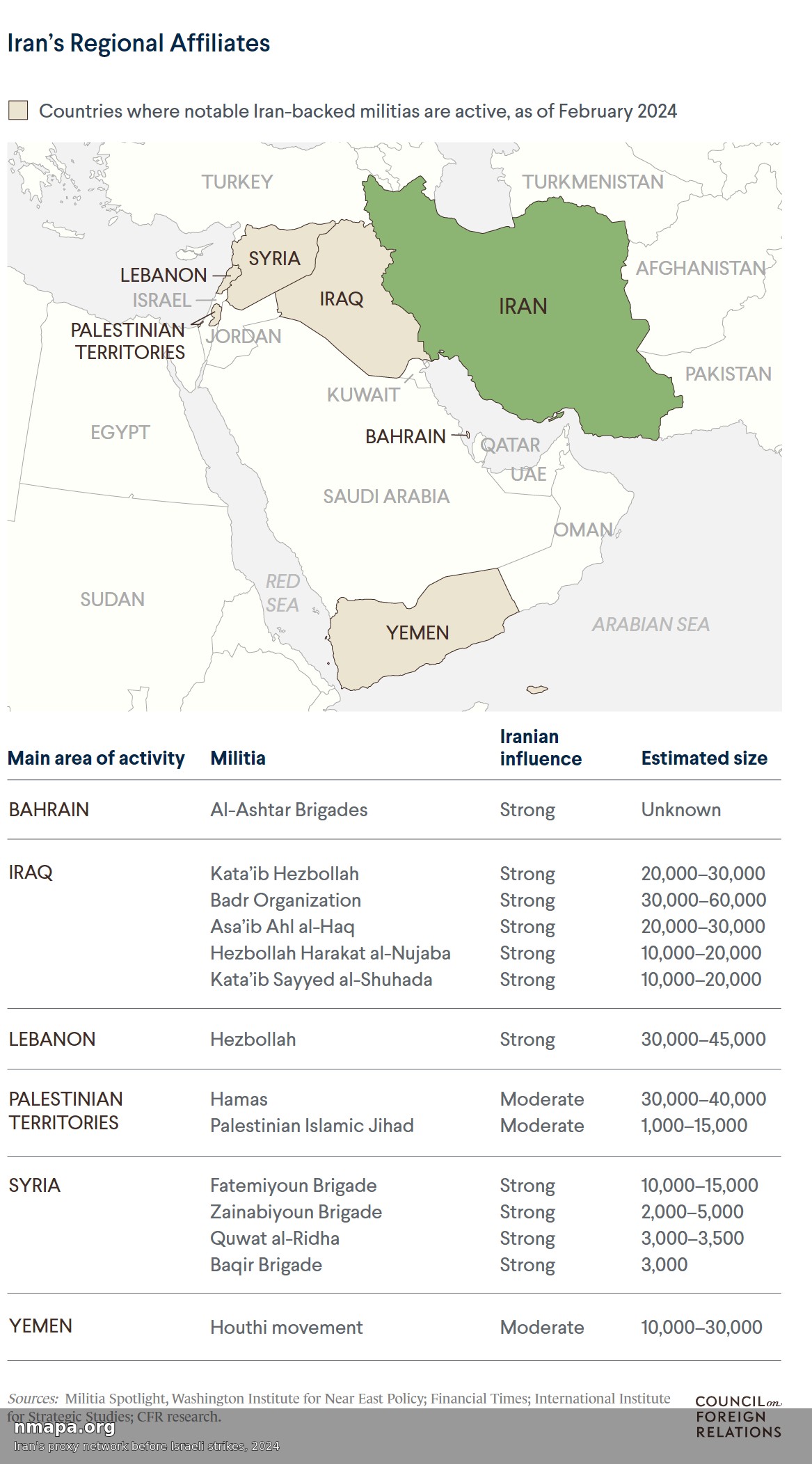Iran's Proxy Network Map Before Israeli Strikes, 2024


Marcus Rodriguez
Historical Geography Expert
Marcus Rodriguez specializes in historical cartography and geographic data analysis. With a background in both history and geography, he brings unique...
Geographic Analysis
What This Map Shows
The visualization titled "Iran's Proxy Network Map Before Israeli Strikes, 2024" offers a detailed overview of Iran's extensive network of proxy forces across the Middle East. This map illustrates the various groups that Iran supports, whether through military, financial, or logistical means. It highlights the geographical spread of these proxies, showcasing their locations in relation to key geopolitical players in the region, particularly in the context of rising tensions and impending military actions.
Deep Dive into Iran's Proxy Network
Iran's proxy network is a strategic tool that the country utilizes to exert influence across the Middle East. These proxies range from militant groups to political factions, and they play a critical role in Iran's foreign policy. The map helps us understand the complex tapestry of these relationships, revealing how Iran operates through third parties to achieve its objectives without direct military involvement.
Interestingly, Iran's proxies are not just limited to one type or ideology. For instance, groups such as Hezbollah in Lebanon, the Houthis in Yemen, and various Shiite militias in Iraq and Syria demonstrate the diverse nature of Iran's network. Each group serves specific purposes: Hezbollah acts as a deterrent against Israel, while the Houthis provide Iran with a foothold in the Arabian Peninsula.
According to various estimates, Iran supports over 100 different militia groups across the region. This support can take many forms, including training, funding, and weapon supplies. The financial backing Iran provides is especially significant; it's estimated that Iran allocates billions of dollars annually to sustain its proxy forces, which in turn enables Tehran to project power far beyond its borders.
The effectiveness of these proxies is evident in their military capabilities. For example, Hezbollah's advanced weaponry, which includes precision-guided missiles, poses a direct threat to Israel and has changed the dynamics of conflict in the region. Meanwhile, the Houthis have demonstrated their ability to target Saudi Arabia, showcasing how Iran's influence can extend to affecting regional security dynamics.
Regional Analysis
The map allows us to break down Iran's proxy network by region, revealing distinct patterns of influence. In Lebanon, Hezbollah remains the most prominent group, effectively serving as Iran's primary ally against Israel. The map highlights its stronghold in southern Lebanon and its operational capabilities, which are crucial for Iran's deterrence strategy.
Moving to Syria, the Iranian presence is underscored by support for various militia groups, including the Popular Mobilization Forces (PMF) in Iraq and local Syrian factions. This cooperation has allowed Iran to maintain a foothold in a country that has been devastated by civil war, using it as a corridor to transport weapons and personnel to groups like Hezbollah.
In Iraq, the various Shiite militias supported by Iran have been instrumental in countering ISIS, but they also serve to extend Iranian influence within the Iraqi government. The map illustrates how these groups are strategically placed to exert pressure on both the Iraqi state and the U.S. military presence in the country.
Interestingly, the Houthi movement in Yemen represents a different facet of Iran's proxy strategy. The ongoing conflict in Yemen has allowed Iran to establish a substantial foothold in the Arabian Peninsula, which could potentially threaten maritime routes in the Red Sea and the Gulf of Aden.
Significance and Impact
Understanding Iran's proxy network is crucial for grasping the complexities of Middle Eastern geopolitics. This network not only complicates regional security but also poses challenges for international diplomacy. As tensions rise, particularly with Israel, the implications of these proxy relationships become even more pronounced.
As we move into 2024, it is essential to consider the potential for escalated conflict. With Israel's increasing military actions and Iran's commitment to supporting its proxies, the risk of wide-scale confrontations looms large. Moreover, the U.S. and its allies must navigate this intricate web of alliances and enmities carefully, as miscalculations could lead to unintended consequences.
In conclusion, the map of Iran's proxy network before the Israeli strikes in 2024 is not just a representation of geographical locations; it encapsulates a strategic framework that highlights Iran's ambitions, the complexities of its regional relationships, and the potential for future conflicts. Understanding this network is vital for anticipating shifts in Middle Eastern dynamics and formulating effective foreign policy responses.
Visualization Details
- Published
- August 5, 2025
- Views
- 160
Comments
Loading comments...